History of WW1
28 July 1914 to 11 November 1918
The First Great War
Battlefield tours help us to understand history, and visiting these significant sites remains a fascinating and rewarding experience, but just how did WW1 begin? The First World War was triggered by the death of Franz Ferdinand, the archduke of Austria-Hungary, who was assassinated in late June, 1914 by a Serbian nationalist in Sarajevo, Bosnia. Following his death an escalation of threats emerged and with the promise of German support, Austria declared war on Serbia on July 28, 1914.
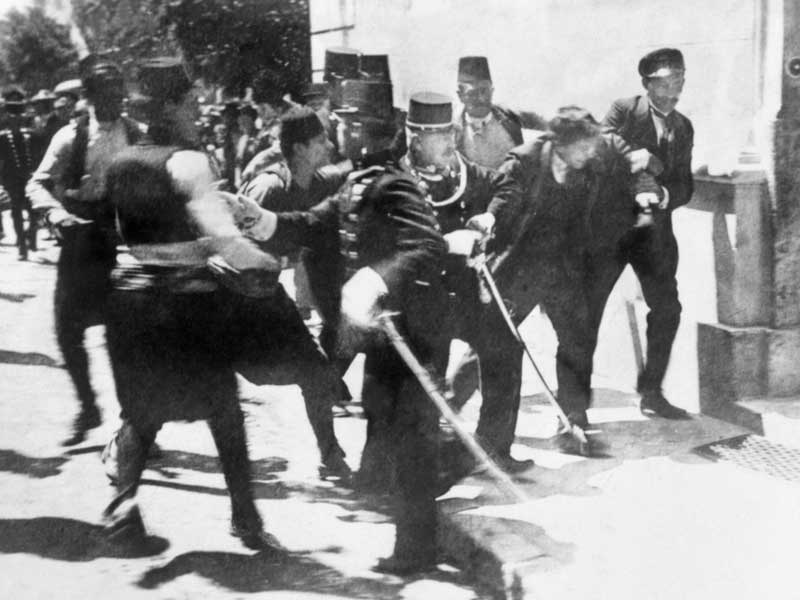
Nedeljko Cabrinovic (second from right), assassin of Franz Ferdinand
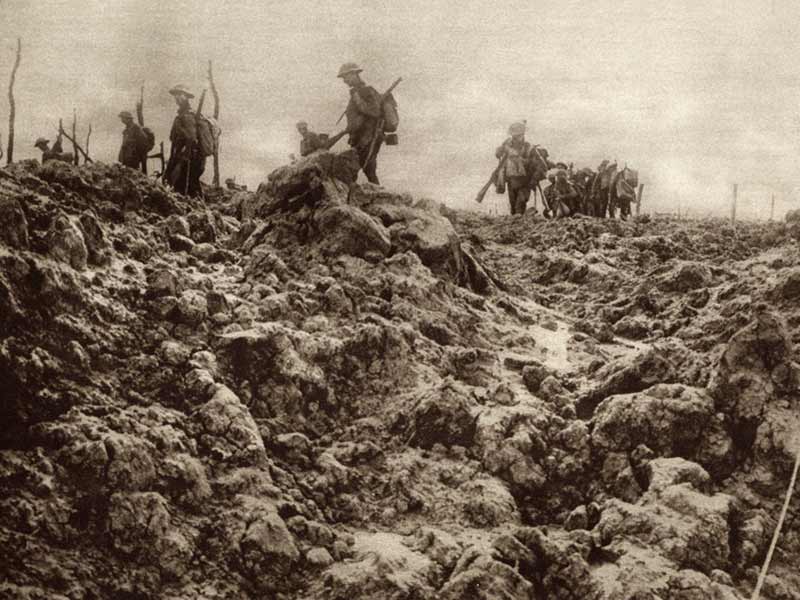
Western front battleground has been churned up by shell explosions. 1915-1918
Causes of the War
In the years before the First World War, the countries of Europe were tied together by treaties and alliances. Germany and the Austro-Hungarian Empire formed one alliance, with France and Russia forming an opposing one. Countries like Belgium remained neutral and Great Britain to a degree kept out of it, as by 1914 British troops had not fired a shot on European soil since Waterloo, 99 years before.
However, the binding nature of these alliances was such that they could easily take the whole of Europe to war. On 28th June 1914 an obscure Serbian terrorist killed the heir to the Austria throne, Archduke Franz Ferdinand, in Sarajevo. This led to Austria declaring war on Serbia, and with Serbia backed by Russia, Russia declaring war on Austria. Soon their allies joined the fray and the two great alliances of Germany and Austria on one side and France and Austria on the other were at war: the Great European War, as it was then known, had begun.
The high command in Germany before WW1 had looked at this and realised that a scenario like this might play out. What they feared as a consequence was Russia mobilising in the east and France to the west, and Germany crushed in the middle. To counter this Count Alfred Von Schlieffen. He drew up the now famous Schlieffen Plan which was essentially a Blitzkrieg, or Lightening War, against France, the weaker partner in the Franco-Russian Alliance.
This would then destroy France, and Germany could concentrate on the greater enemy, Russia. In August 1914 the plan was put into effect taking German troops into eastern France and also Belgium.
The invasion of Belgium was a way to take troops from Germany into northern France, so with men attacking from here and from the east, both spearheads of attack would head for Paris: besiege Paris and knock France out of the war.
This was where Britain became involved as the movement of German troops into Belgium contravened their neutrality, a neutrality guaranteed by Britain under the Treaty of London in 1839. When the Germans would not withdraw, Britain declared war on Germany on 4th August 1914; in just 37 days since Sarajevo, now the whole of Europe was at war.
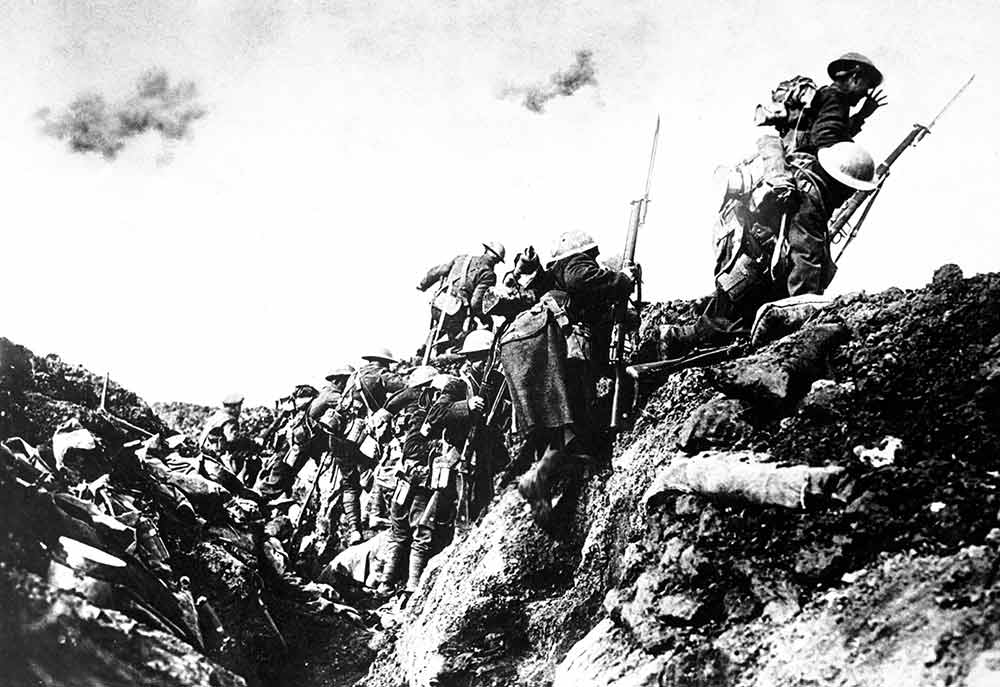
Troops going, over the top, during training
The First Battles
Every nation was ready for war in 1914, just not the war it soon became. But in 1914 this was the war they had prepared for: a war of movement. French and German troops clashed in the Battle of the Frontiers in August as the Schlieffen Plan marched on, leading to France’s bloodiest day of the entire war on 22nd August when more than 27,000 French soldiers died in a single day.
For Britain the opening shots were at Mons on 23rd August 1914 when units of the British Expeditionary Force defended the Mons-Conde Canal. The battle was in many ways a British victory, but the French army withdraw on their flank, leaving them exposed. The so-called Retreat From Mons began which took them over 200 miles to the Marne to take part in the largest single battle of 1914, the Battle of the Marne, when the Schlieffen Plan was finally halted, almost at the gates of Paris.
Having failed to take Paris, the Germans then moved north to Flanders in the so-called Race to the Sea. The route to the coast took them towards the old medieval city of Ypres, and it was here that the First Battle of Ypres began in October 1914.
The German advance was again stopped, and both sides dug in. The mobile war was over.
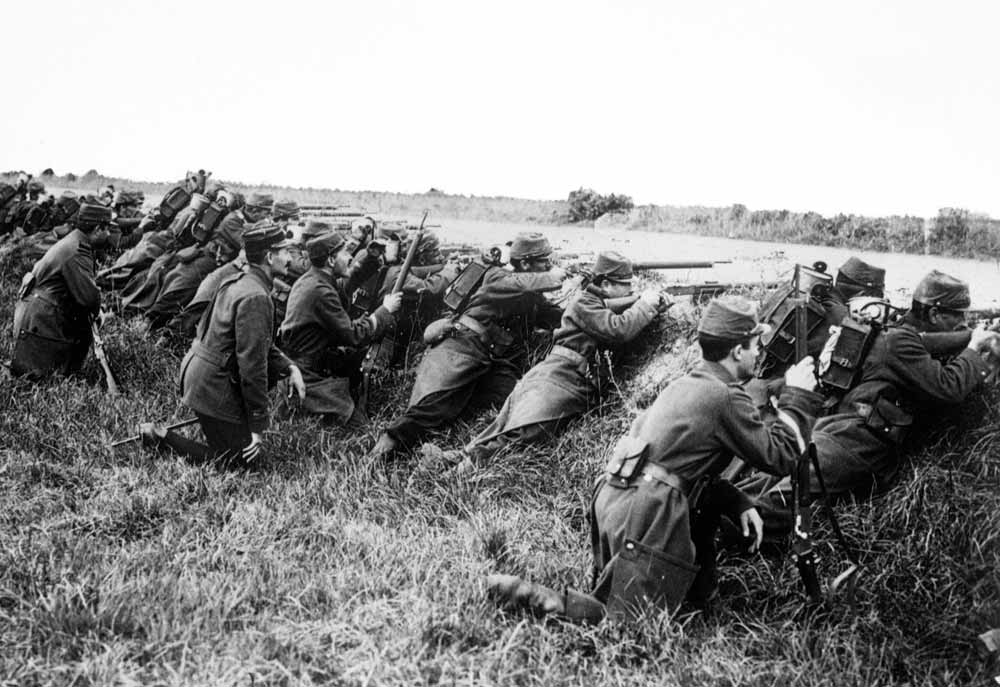
The Battle of Marne
Trench Warfare
When the war of movement came to an end in the late autumn of 1914, both sides dug in. Germany was now facing its worst nightmare with fighting against Britain and France in the west and Russia in the east.
On both fronts they dug in, and on the Western Front a whole series of trenches were dug stretching over 450 miles from the Channel coast to the border of Switzerland. The key to understanding the First World War is to see it as a huge siege – with both sides locked into that siege over the course of the next four years, with the front hardly moving.
This was the war no-one had planned for: a strange, dark, troglodyte war in which men lived in deep dugouts, fought in trenches, walked through tunnels, and were surrounded by high explosive and gas.
Both sides spent much of the next four years trying to develop ways of fighting and winning this war, eventually leading to the final battles of the conflict when the war once again became mobile.
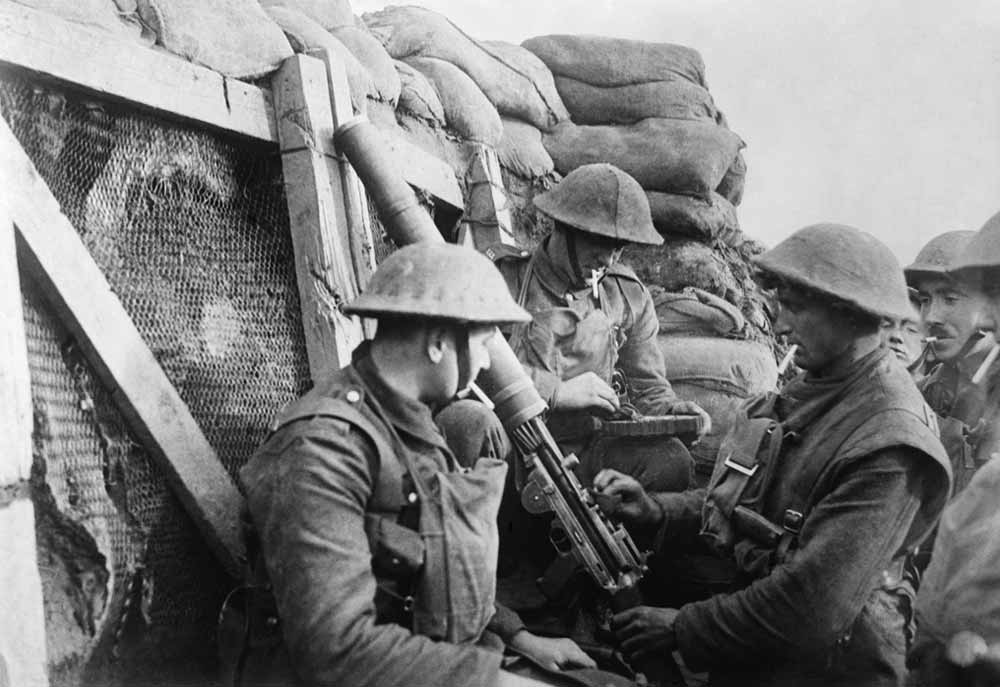
British WW1 machine gun crew in a front line trench. 1914-18
The Great Battles of WW1
During the years of trench warfare a whole series of big battles were fought along the Western Front.
The British going on the offensive first at Neuve-Chapelle in March 1915, the Germans introducing poison gas at Second Ypres in April 1915, leading to the next phase in 1916 of industrial scale warfare with battles like Verdun and the Somme. The war moved from regular soldiers fighting in the trenches, to territorials to volunteers and by 1916 there were conscripts.
Commanders came and went, and for Britain General Sir Douglas Haig commanded troops on the Western Front from late 1915 until the end of the war.
Under his command the British Army adapted and changed, and while post-war he was often blamed for the huge casualties his leadership enabled the army to become a modern fighting force and fight battles that would result in victory in 1918.
For most British soldiers the defining battles of the war, which still dominate public consciousness, were the Somme in 1916 and Passchendaele in 1917. The latter in particular was renowned for its terrible conditions of mud and lunar-landscapes of shell holes.
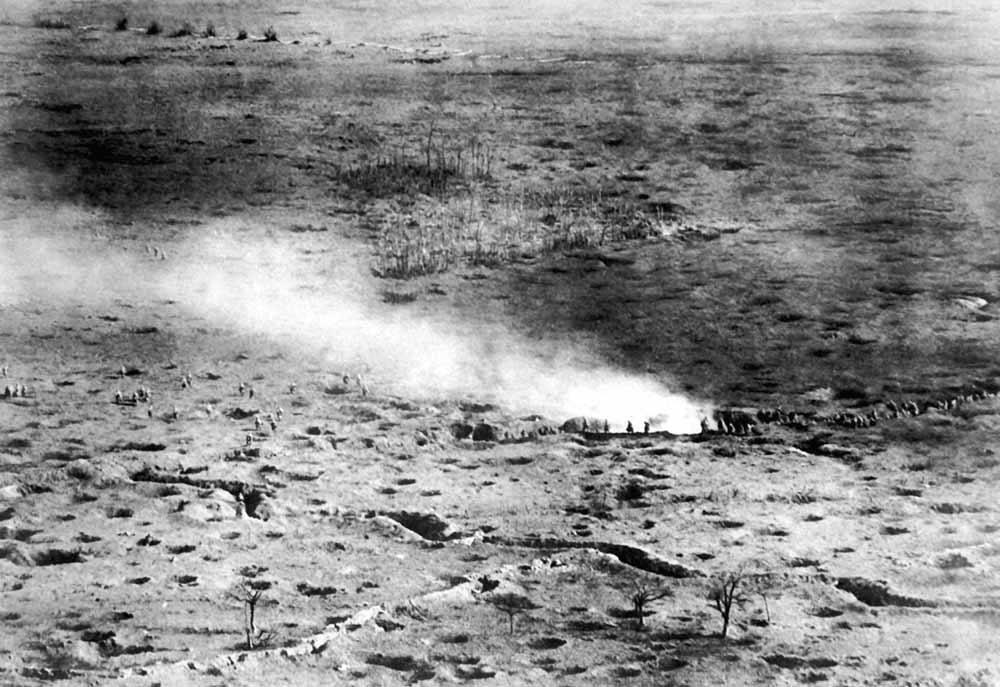
Troops on the Somme Front, launching an attack on the Germans. 1916-18
Tanks: The New Warfare
As the war progressed new weapons were developed, but one of the most significant was the tank.
First used on the Somme in September 1916, at Cambrai the following year more than 400 British tanks smashed the German defences on the Hindenburg Line, showing what tanks were capable of. In the battles of 1918, tanks paved the way to victory on the battlefield, and in that year tanks fought tanks for the first time. This technical legacy of WW1 would go on to become even more significant a generation later in WW2.
In the beginning tanks were designed for front-line combat and to overcome the deadlock of trench warfare, with heavy firepower, strong armour, and tracks providing good maneuverability, they were feared on the battlefield.
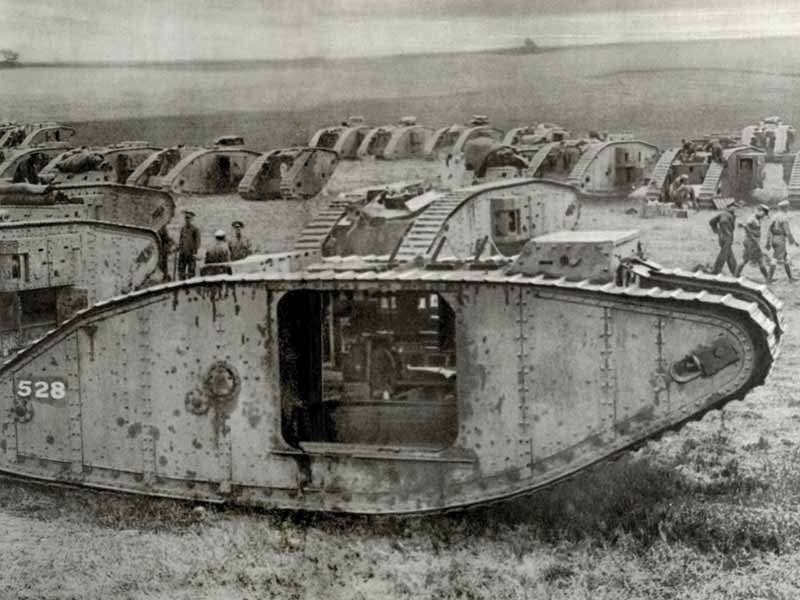
Tank squadrons on the Western Front
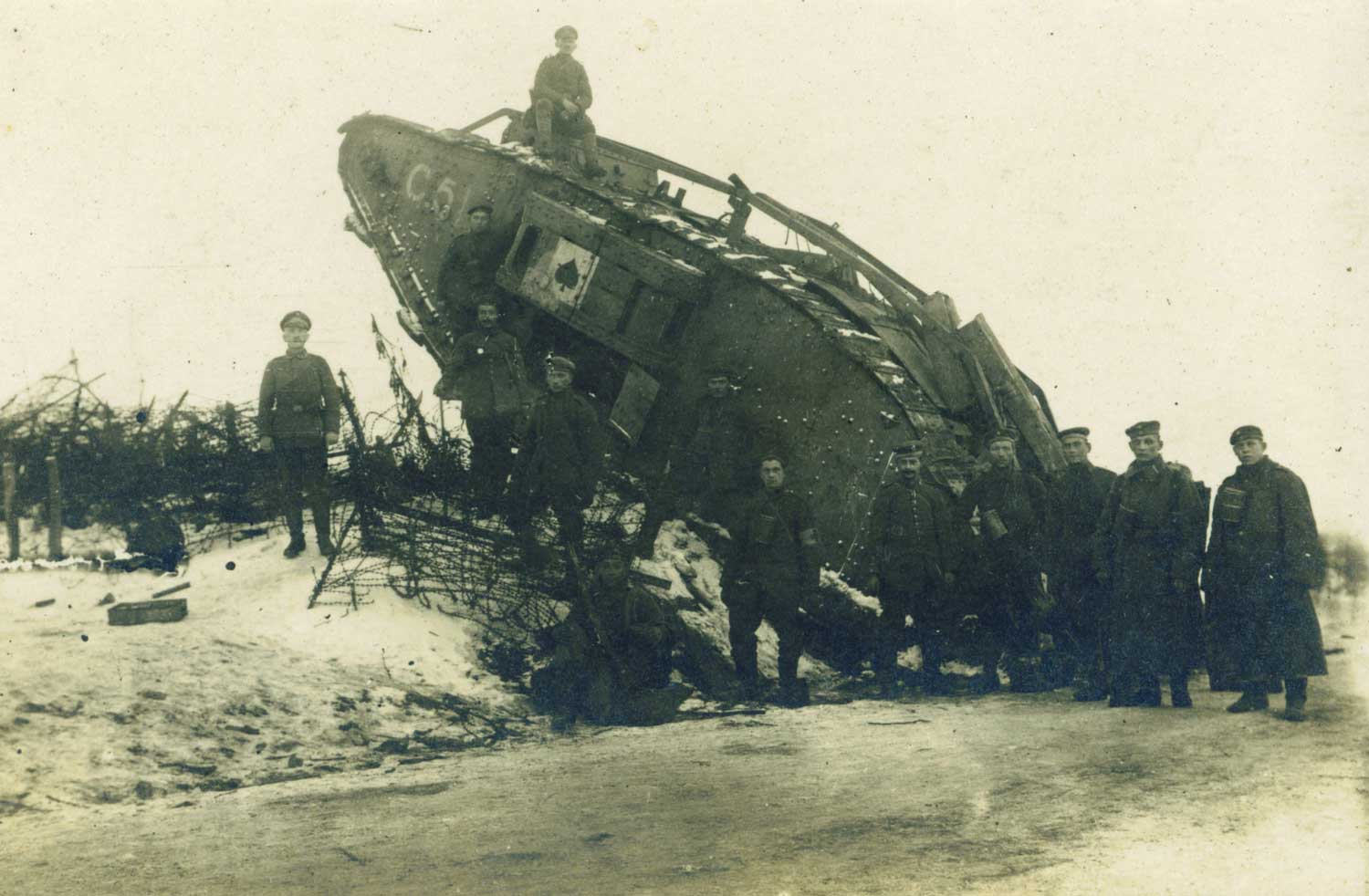
British tank at Cambrai
1918: Year of Decision
The final year of the war saw the end of trench warfare with a whole series of German Offensives along the Western Front. America had joined the war on the side of Britain and France in April 1917, and Germany knew that it was only a matter of time before US combat troops reached the battlefield.
When they did, it would tip the balance in the favour of the Allies and Germany would lose. Ending the war against the Russians in February 1918 released more than a million German soldiers to come to the Western Front.
The first attack was on the Somme on 21st March 1918 when the Germans broke through until stopped at Villers-Bretonneux. In Flanders in April 1918, during what the British called The Battle of the Lys, the Germans attacked again, and then on the Aisne in May and in the Marne in June-July 1918. By this time the German Army was not only running out of steam, but men: a very high percentage of those million who had come from Russia were now dead, wounded or prisoners of war.
With the arrival of American troops by the summer of 1918 the Allies went on the offensive again and at Amiens on 8th August 1918 the German positions were broken and it was the beginning of the last one hundred days of the First World War. British forces pushed the Germans back in Northern France and Flanders, and Americans and French did the same in the Meuse-Argonne offensive and in the Champagne.
The final battles of this decisive period of the war were successful but costly; the Canadians alone, for example, were losing tens of thousands of men each month during this period.
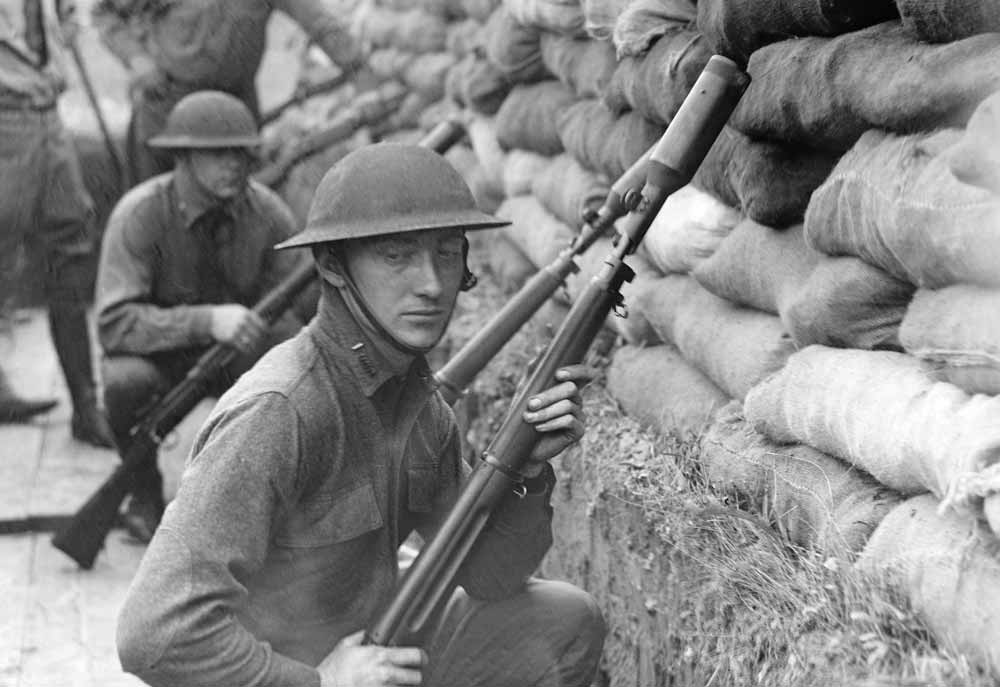
US Soldier in WW1
The Last Day of WW1
In October 1918 Kaiser Wilhelm II of Germany abdicated. A new provisional government looked at the situation on the battlefield and concluded that only defeat lay ahead. They sent representatives across to the Allied lines to discuss the terms of a surrender and when they met with Marshal Foch, who commanded the Allied forces on the Western Front, he insisted on unconditional surrender.
This came into effect with an Armistice at 11am on 11th November 1918, but the fighting continued right up until the last moment. For the British their war ended at Mons, where it had started in 1914, and here the last British soldier fell about an hour and a half before the Armistice: George Edwin Ellison of the 5th Lancers.
Ellison was a pre-war regular soldier who had been at the front since 1914. But he wasn’t the last of all: the final British and Commonwealth casualty was a Canadian: George Lawrence Price, who died in the streets of Mons just two minutes before the end of the war.
The final Allied soldier to die was an American, who fell near Verdun at 10.59am, just seconds before the end: Henry Gunther was in a rifle section advancing through the fog when they walked straight into machine-gun fire. Their deaths brought the war on the Western Front to an end.
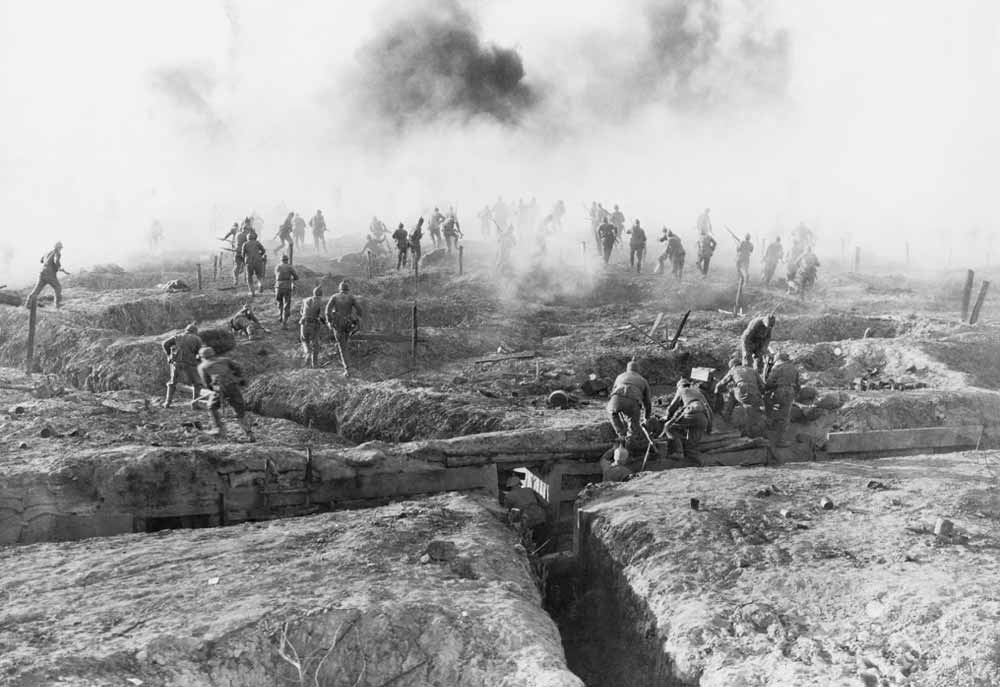
The Western Front
The Cost of War
For Britain, the First World War was a watershed period of social change which firmly moved the country into the grim realities of the twentieth century.
The monetary cost of the war was so huge it took nearly a century to pay off the debt. But the human cost was also enormous: more than a million had died from Britain and the Commonwealth, and millions of others wounded, sick and taken prisoner. While four in every five soldiers survived the war, their lives would be changed forever as the experience of this unique war would haunt them all their remaining years.
As one veteran said “no man was the same after the Somme” and while by the 1980s only a handful of veterans remain, and were largely forgotten, the death of the Last Fighting Tommy, Harry Patch, in 2009 rekindled interest in the war and the centenary period has seen record levels of people visiting the old battlefields and researching the lives of those who fought and died in the First World War.
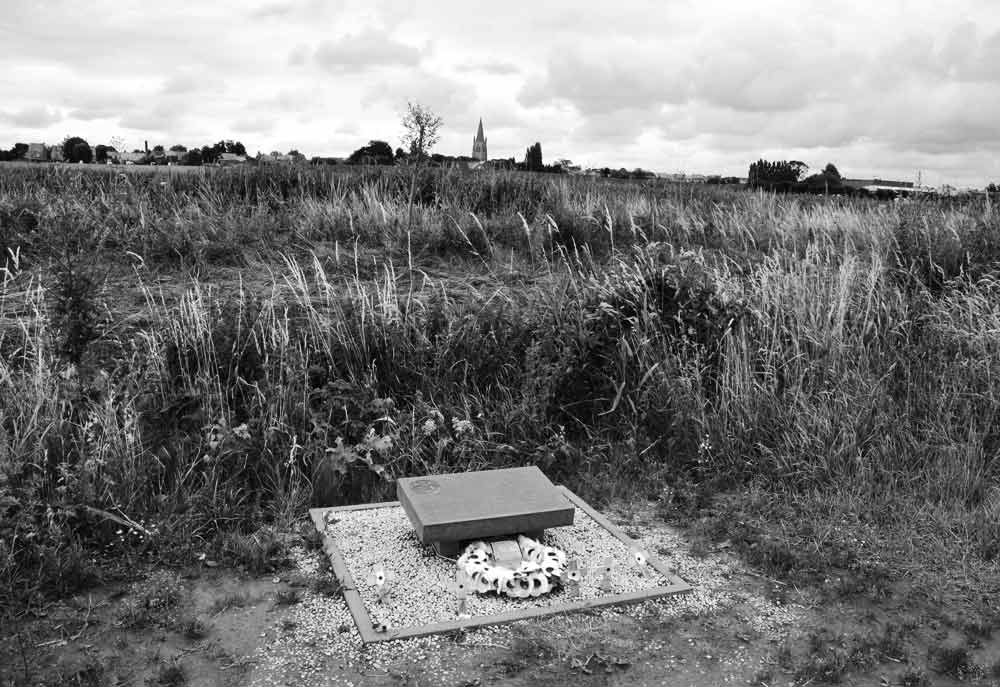
Memorial to the Last Fighting Tommy, Harry Patch, who died in 2009
History of War - Heroes, Battles and Weapons
Follow in the footsteps of heroes, fighting on the front line. Learn about the incredible sacrifice and bravery on the battlefields or take an in depth look at the weapons and machinery used throughout history. No matter what your interest, we’ll have a tour to suit you.
Featured Tours of WW1
Need some inspiration for your next WW1 battlefield tour? Whether you're looking at visiting the main sites around the Somme and Flanders, or you're looking to follow specific campaigns or aspects of the Great War, we have many tours to choose from, all of which offer the same expertise and interest from our Specialist Battlefield Guides.

